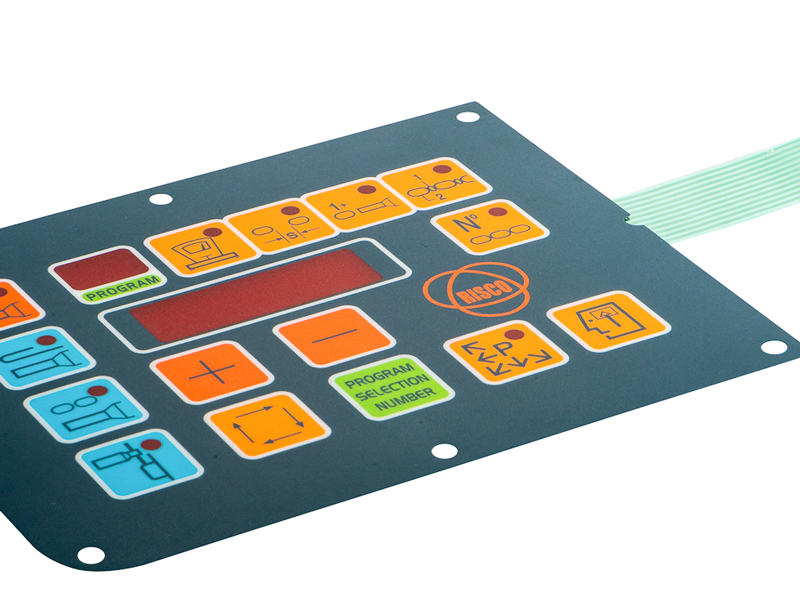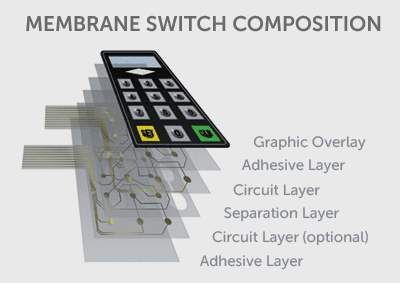Understanding the Durability and Versatility of a Membrane Switch
Understanding the Durability and Versatility of a Membrane Switch
Blog Article
Comprehending Membrane Layer Switches: The Key to Sturdy and Dependable Controls
Membrane changes represent a vital facet of contemporary interface layout, blending performance with strength in various applications. These flexible parts not just assist in customer communication but are additionally crafted to stand up to the roughness of demanding environments, from medical devices to commercial equipment. Recognizing their building and construction, operation, and the myriad benefits they provide is necessary for developers and designers alike. As we explore the ins and outs of membrane layer buttons, it comes to be clear that their duty in improving control systems is both extensive and complex, questioning about how finest to utilize their abilities in future innovations.
What Are Membrane Buttons?
Membrane layer switches are an advanced option in the realm of individual interface modern technology, integrating functionality and design perfectly. These tools function as a user interface between users and electronic systems, integrating several parts right into a small format. Normally constructed from adaptable, thin layers of materials, membrane switches are made to react to touch, enabling users to interact with machinery and digital tools efficiently.
The key aspects of a membrane layer button include a printed circuit layer, visuals overlay, and a spacer layer that prevents unplanned activation. The visuals overlay can be tailored to reflect brand name identification or user choices, enhancing looks while making sure usability. Membrane switches are frequently made use of in different applications, consisting of medical gadgets, consumer electronic devices, and industrial tools, owing to their longevity and resistance to environmental variables such as dampness and dust.
One of the key advantages of membrane layer switches is their capability to withstand wear and tear, making them ideal for high-traffic environments. In addition, they are light-weight and need very little space, enabling ingenious layouts in item growth. Generally, membrane layer changes represent a sensible and reliable selection for modern digital interfaces, weding modern technology with user-centric design concepts.

How Membrane Layer Switches Over Work
The operation of membrane switches hinges on an easy yet reliable device that converts user input right into electronic signals. When a customer presses the button, the top layer warps, allowing a conductive component in the circuit layer to make call with a corresponding conductive pad on the bottom of the visuals overlay.
The layout of membrane buttons can differ, yet they frequently integrate domes or responsive components to provide comments to the individual, improving the general experience. The materials used in membrane buttons, such as polyester or polycarbonate, add to their durability and resistance to ecological elements, consisting of dampness and dust. Moreover, the published circuits are typically enveloped, which safeguards them from deterioration over time.

Advantages of Membrane Layer Switches
One of the primary benefits of membrane buttons is their versatility in style, permitting them to be tailored to satisfy certain user demands and aesthetic demands. This versatility encompasses different industries, where various shapes, sizes, and shades can be used to boost customer communication and visual appeal.
In addition, membrane buttons are known for their sturdiness. Built from robust products, they are immune to dirt, wetness, and physical wear, which considerably prolongs their life expectancy compared to typical mechanical switches. This resilience makes them particularly ideal for high-traffic atmospheres and applications calling for long life.

In addition, membrane layer buttons offer a streamlined account, resulting in a thinner layout that can be incorporated into different gadgets without adding bulk. This feature not only improves the visual charm but additionally adds to a more ergonomic product layout.

Applications of Membrane Switches
Versatile and straightforward, membrane switches locate applications throughout a variety of sectors, consisting of medical devices, customer electronic devices, and commercial tools. In the clinical field, these switches are important to tools such as diagnostic equipment, patient monitoring systems, and infusion pumps, where integrity and simplicity of cleaning are essential. Their capacity to keep and stand up to severe settings capability makes them ideal for such applications.
In consumer electronics, membrane buttons are made use of in products like microwaves, washing machines, and remotes - membrane switch. Their sleek layout permits for intuitive user interfaces, boosting the overall individual experience while providing sturdiness and resistance to tear and wear
Commercial tools also takes advantage of membrane layer buttons, especially in control panels for click here now machinery and automation systems. These switches supply security against dirt and dampness, making certain constant performance in difficult atmospheres. Additionally, their adjustable functions permit makers to customize them to certain operational needs, improving effectiveness and functionality.
Choosing the Right Membrane Layer Change
When choosing a membrane layer button, it is important to consider various elements that influence efficiency and suitability for details applications. The primary considerations consist of ecological conditions, tactile feedback, longevity, and style requirements.
First, examine the operating setting; switches exposed to dampness, chemicals, or severe temperature levels require particular products to ensure durability and capability. Next off, review the demand for responsive feedback. Depending upon individual interaction, some applications might take advantage of a responsive reaction to confirm activation, while others might prefer a non-tactile layout for visual factors.
Sturdiness is one more essential factor; membrane switches need to be made to stand up to regular use, effects, and abrasion. Make sure the picked switch can sustain the expected lifecycle, especially in high-usage situations.
Verdict
In final thought, membrane changes offer as crucial components in the design of durable and reputable control systems across different industries. The flexibility of membrane layer switches over allows for tailored options that fulfill certain functional demands, reinforcing their significance in contemporary technology.
Membrane layer switches represent a crucial facet of contemporary interface design, mixing capability with strength in different applications.Membrane buttons are a sophisticated remedy in the realm of individual interface technology, incorporating capability and style perfectly. Usually created from adaptable, slim layers of products, membrane layer buttons are designed to respond to touch, making it possible for customers to engage with machinery and digital gadgets properly.
The layout of membrane layer switches can differ, but they typically include domes or responsive elements to give feedback to the customer, enhancing the total experience.In final thought, membrane layer switches over serve as important components in the design find here of reputable and resilient control pop over here systems throughout different sectors.
Report this page